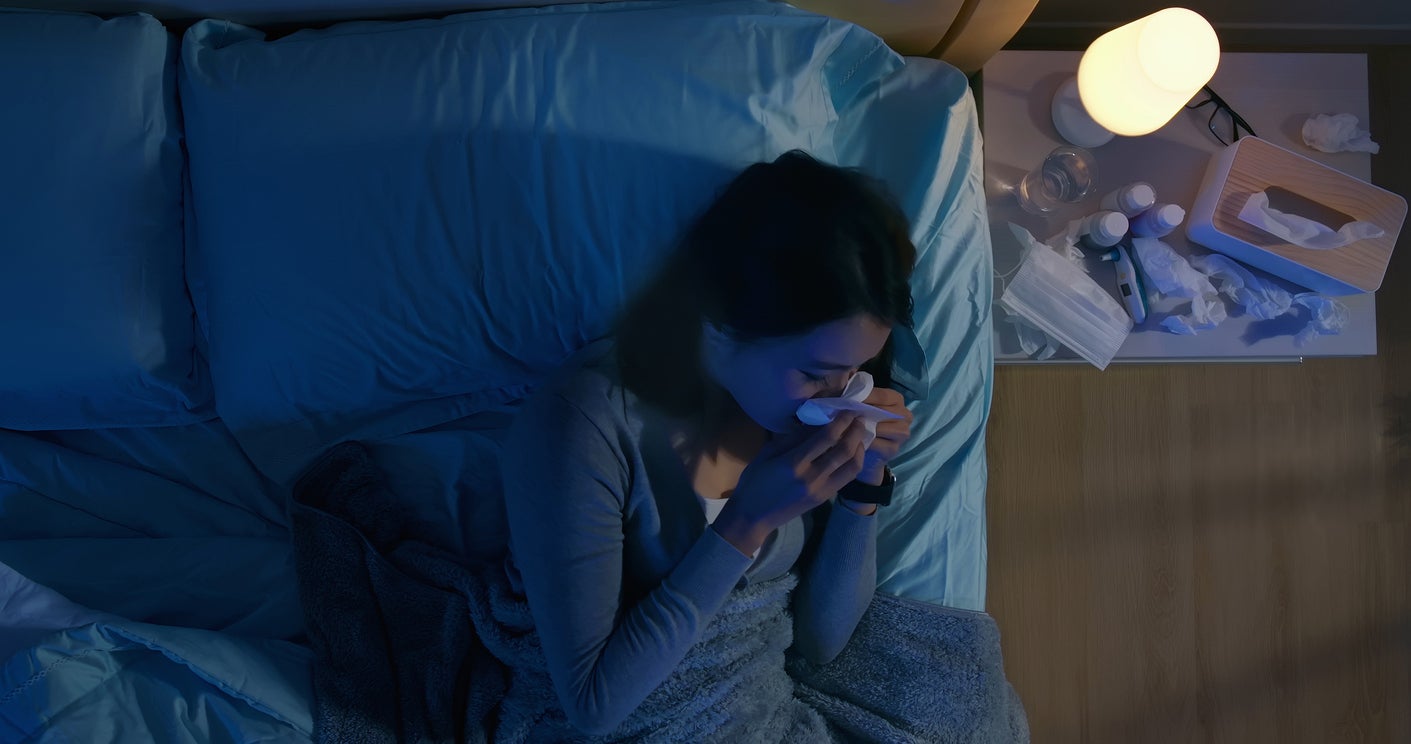ARTICLE AD BOX
After months of dark, grey skies and cold weather, the start of the warmer season is bittersweet for those with hay fever.
More than 13 million people suffer from the condition in the UK, which prompts itchy noses, watery eyes, and waves of sneezing. While the symptoms can be controlled with antihistamines or other anti-allergy medication during the day, it can be a trickier situation to handle at night.
Approximately 26 per cent of Brits struggle to sleep at night with hay fever, and sleepless nights and poor sleep can then have a knock-on effect on physical health and mental wellbeing during the day.
Sleep expert Dr Deborah Jane has more than 20 years of experience of helping people achieve peaceful nights of rest. She has some tips that can help sufferers manage their symptoms with some quick tweaks to their lifestyles and home environment.
Hoover your mattress
One of the quickest ways to make a difference is to get the vacuum out and hoover your bed, where particles of dust and pollen can stubbornly linger.
“Hoovering your mattress is something that often gets put to the back of the list, or forgotten completely,” says Dr Jane.
“By whipping out your Hoover and getting it on your mattress, you’ll massively reduce the amount of dust and pollen particles that you bring in from outside and ensure that they’re limited in the bedroom.”
Dr Jane says that a vacuum cleaner with a higher energy particulate filter (HEPA) can be extra efficient, picking up microscopic traces of dust.

Wash your clothes
Another easy win is to make an effort effort to do your laundry when suffering with hay fever symptoms. Smells and substances can cling to clothes, making the discomfort worse.
“While washing your clothes may be the last thing on your mind, doing this will help get rid of any pollen and allergens as you come into the house, stopping it from going into your furniture,” says Dr Jane.
But, she says there’s a clever trick to doing this too.
“Be sure to not rub your eyes and hair while you’re doing the washing, as pollen molecules may get trapped among hair and skin fibers. On the plus, this is the perfect weather to get lots of washing done quickly!”
Inclined bed therapy
While it might feel counterintuitive at first, sleeping in a slightly elevated position can enhance your experience at night.
“Inclined bed therapy has been used to combat numerous sleeping issues, such as sleep apnea,” she says. “However, it’s also a practice that can be used to combat allergies, specifically hay fever.”
She provides instructions on how to do this: “You’ll need to place a few cushions or pillows under your neck and head before you sleep, and elevate your head to around 10 to 30 degrees.
“This will help your body drain any mucus from your sinuses a lot quicker thanks to gravity, which results in clearer airways prior to bedtime. This should help with your breathing if one of your symptoms is a runny nose.”

Purchase an air purifier
Veteran hay fever sufferers may already be familiar with this tip, but an air purifier can be a life-changer if you’re experience stubborn symptoms.
“Even at night, dust and pollen remains in the air. It would be worth buying a ‘silent’ air purifier, so that the noise doesn’t keep you up at night,” advises the expert.
“This can help minimise the impact of allergies and hay-fever. If you can, turn it on just before bedtime so that it starts taking out the allergens before you get into bed, and clears the air ready for you to settle.”
Hypoallergenic bedding
Lastly, a change of bedding can be a smart investment if you’re struggling to sleep at night with symptoms. Hypoallergenic bedding is designed specifically to keep allergies at bay.
“It uses hollowfibre rather than feather alternatives, and reduces the chance of pollen and dust build up at night-time by preventing pollen, house dust and other allergens getting trapped inside the bedding,” explains Dr Jane.









 English (US) ·
English (US) ·